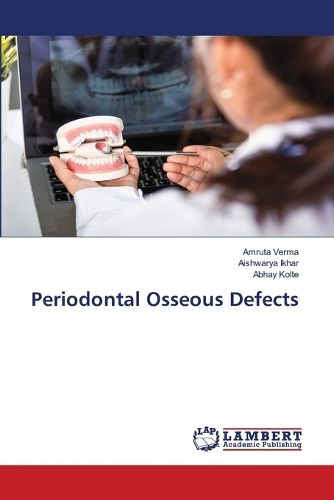Readings Newsletter
Become a Readings Member to make your shopping experience even easier.
Sign in or sign up for free!
You’re not far away from qualifying for FREE standard shipping within Australia
You’ve qualified for FREE standard shipping within Australia
The cart is loading…






This title is printed to order. This book may have been self-published. If so, we cannot guarantee the quality of the content. In the main most books will have gone through the editing process however some may not. We therefore suggest that you be aware of this before ordering this book. If in doubt check either the author or publisher’s details as we are unable to accept any returns unless they are faulty. Please contact us if you have any questions.
Periodontal osseous defects are a frequent sequela of periodontitis. Diagnosing their presence and establishing their morphology before surgical access requires a careful clinical examination combined with diagnostic quality radiographs. This poses a clinical challenge that should not be underestimated. The treatment of intrabony defects using conservative approaches including access flaps is expected to produce an average gain of probing attachment of close to 2.00 mm. The defects may be filled with new bone for approximately 1.5 mm without the placement of grafts. This bone-fill does not automatically implicate the generation of new attachment to the root surface. The defect size profoundly affects the treatment outcome for both probing attachment loss gain and bone-fill values. Further, the angle between the root surface and the bony wall of an intraosseous defect represents another important factor in the healing process. Defects on root surfaces without furcation appear to have better chances of healing than defects associated with furcation. Also, the postsurgical supportive care appears to be one of the most important determining factors for positive treatment outcomes.
$9.00 standard shipping within Australia
FREE standard shipping within Australia for orders over $100.00
Express & International shipping calculated at checkout
This title is printed to order. This book may have been self-published. If so, we cannot guarantee the quality of the content. In the main most books will have gone through the editing process however some may not. We therefore suggest that you be aware of this before ordering this book. If in doubt check either the author or publisher’s details as we are unable to accept any returns unless they are faulty. Please contact us if you have any questions.
Periodontal osseous defects are a frequent sequela of periodontitis. Diagnosing their presence and establishing their morphology before surgical access requires a careful clinical examination combined with diagnostic quality radiographs. This poses a clinical challenge that should not be underestimated. The treatment of intrabony defects using conservative approaches including access flaps is expected to produce an average gain of probing attachment of close to 2.00 mm. The defects may be filled with new bone for approximately 1.5 mm without the placement of grafts. This bone-fill does not automatically implicate the generation of new attachment to the root surface. The defect size profoundly affects the treatment outcome for both probing attachment loss gain and bone-fill values. Further, the angle between the root surface and the bony wall of an intraosseous defect represents another important factor in the healing process. Defects on root surfaces without furcation appear to have better chances of healing than defects associated with furcation. Also, the postsurgical supportive care appears to be one of the most important determining factors for positive treatment outcomes.